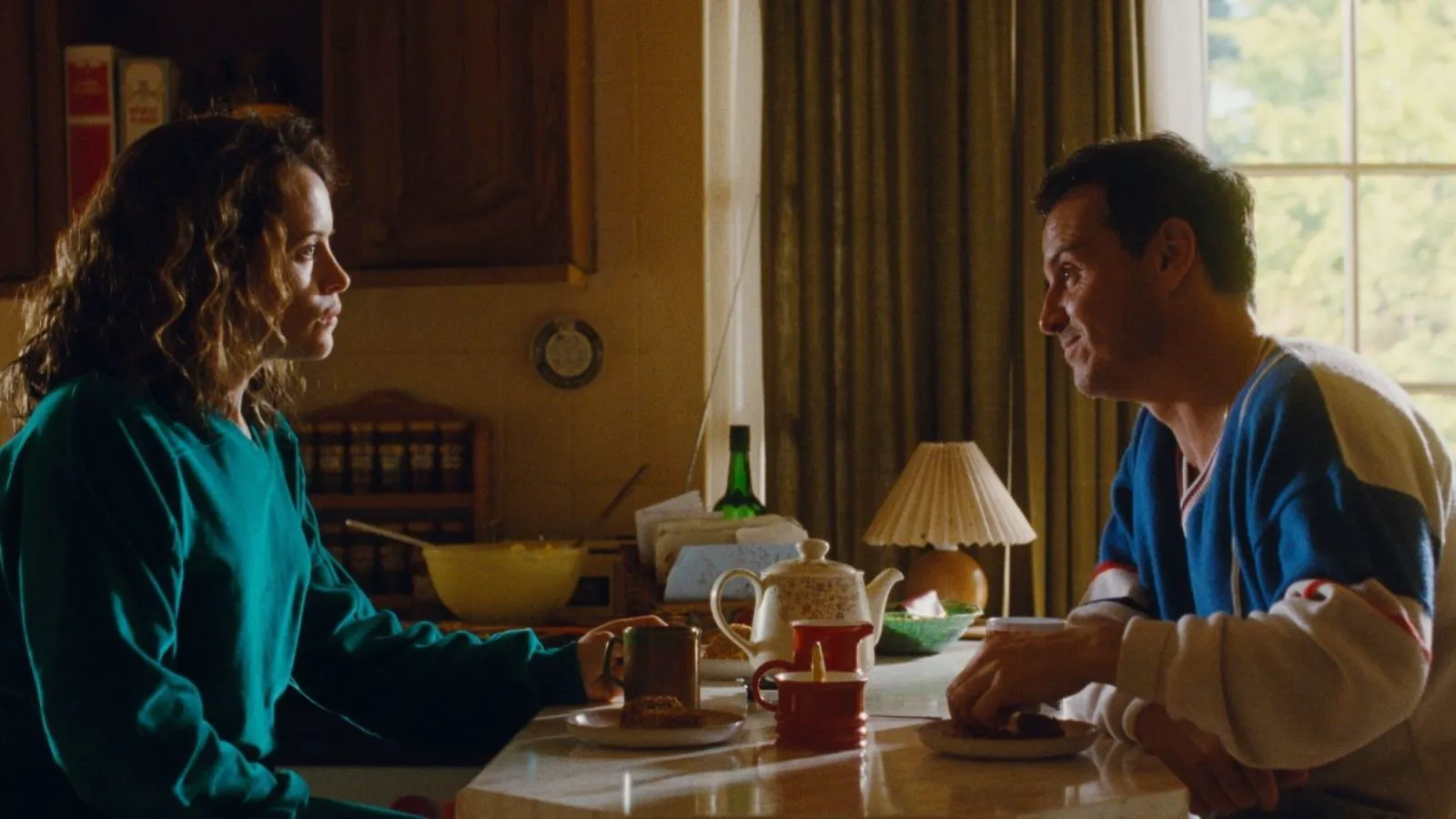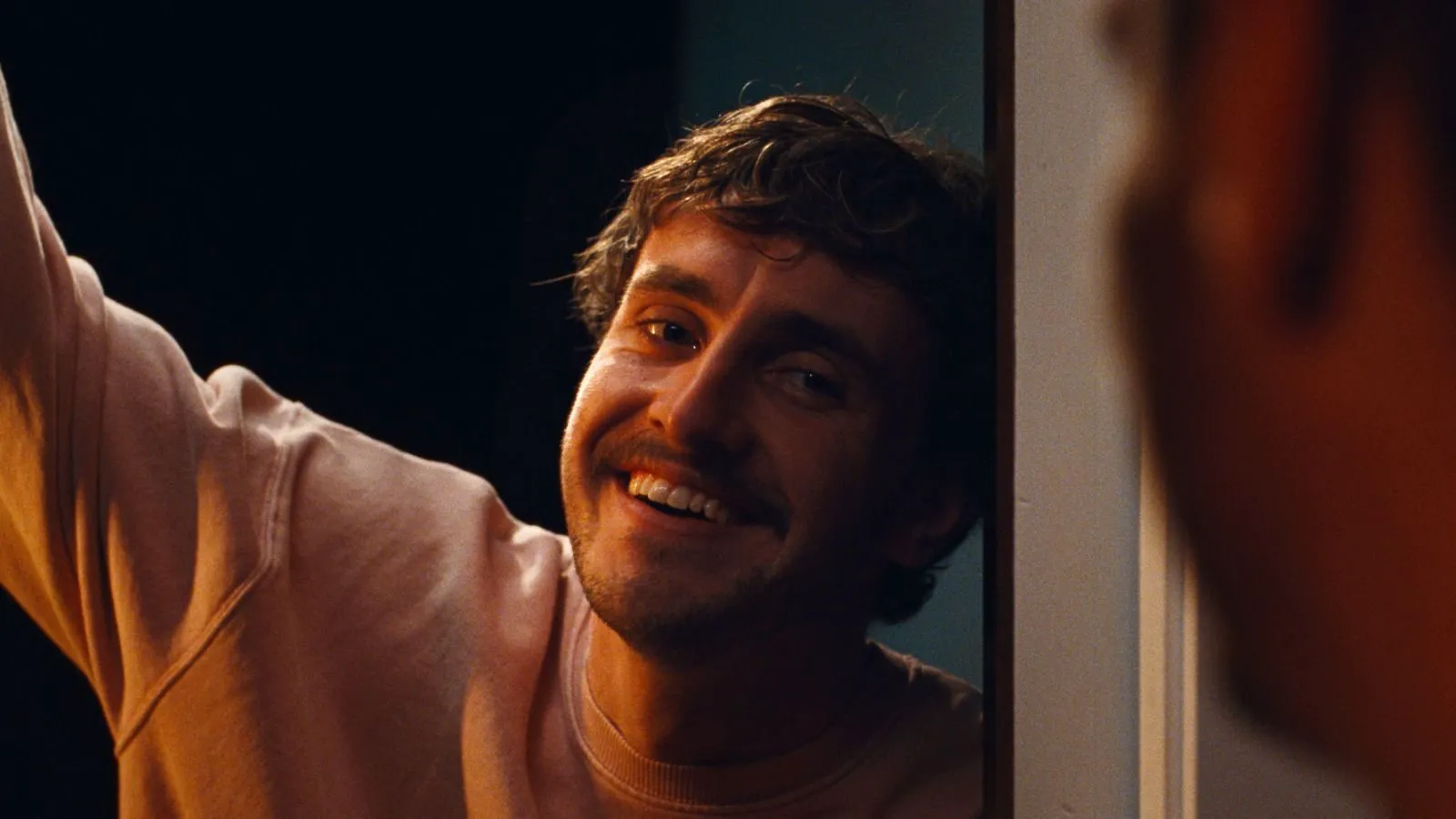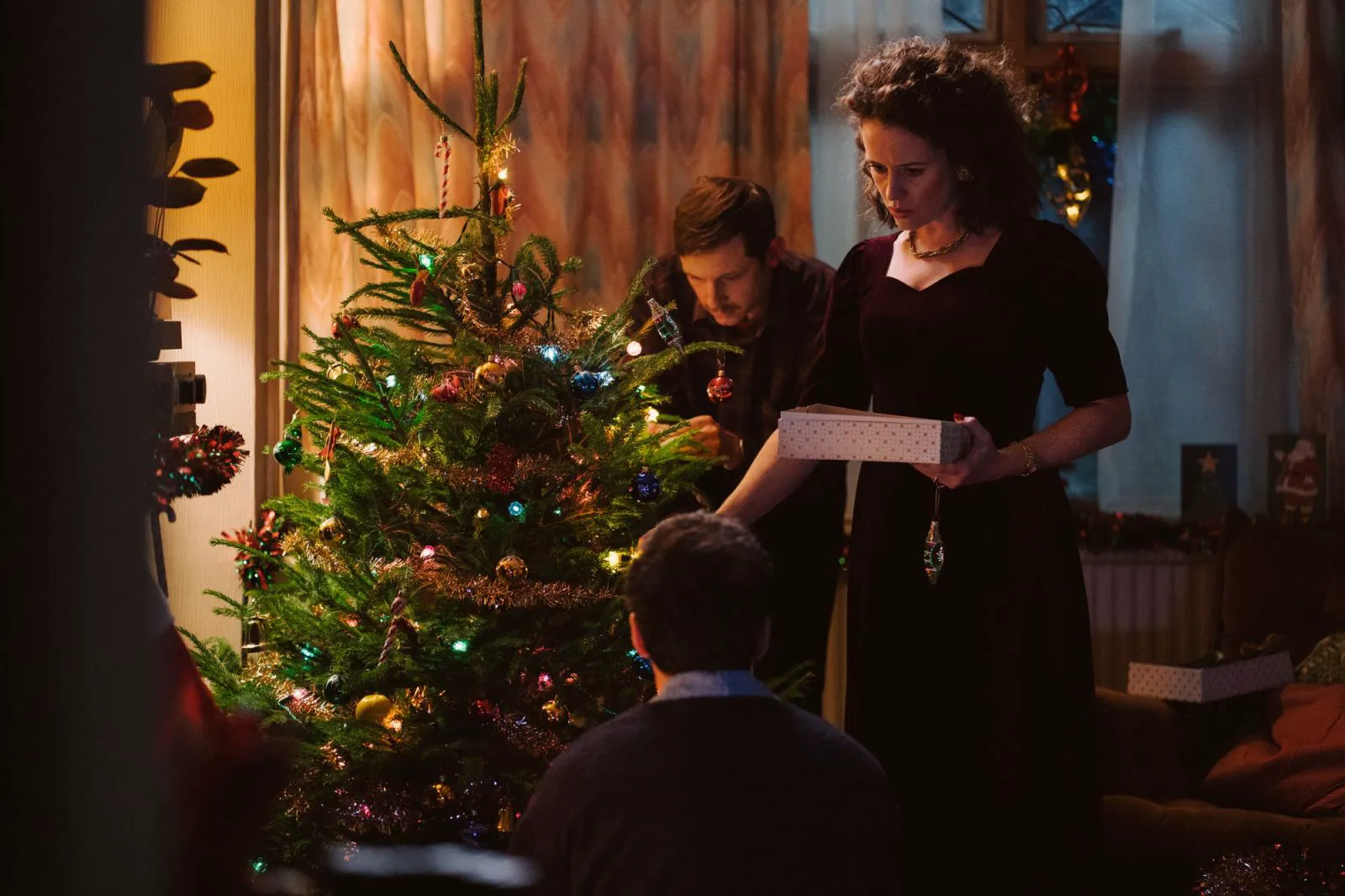In a largely deserted high-rise in London, screenwriter Adam (Andrew Scott) leads a solitary existence, his days marked by television and snacking. His routine is disrupted when his only neighbor, the charismatic Harry (Paul Mescal), intoxicated and seeking company, appears at his door. After some hesitation, Adam invites him in, and they quickly bond over their shared feelings of profound loneliness. Adam is haunted by the loss of his parents when he was twelve, a tragedy he still hasn’t overcome three decades later. He occasionally revisits his childhood home, where everything remains as it was, and his parents (Claire Foy and Jamie Bell) are still alive, allowing him to engage in mature conversations about past mistakes.

Andrew Scott as Adam in “All of Us Strangers”
A Dive into Inner Turmoil: “All of Us Strangers”
First screened at the Telluride Film Festival, Andrew Haigh’s melodrama “All of Us Strangers” has become a festival favorite, aligning itself with the genre of psychotherapeutic cinema. These films eschew external conflict, focusing instead on the protagonist’s internal struggles stemming from traumatic experiences. This thematic approach has gained popularity in recent years, with examples like Céline Sciamma’s “Petite Maman,” Joanna Hogg’s “The Eternal Daughter,” and Charlotte Wells’ “Aftersun.” Haigh’s work, an adaptation of Taichi Yamada’s Japanese novel “Strangers,” takes a middle ground. It explores encounters with ghosts, the profound impact of childhood on adult life, and the attempt to establish a dialogue with those with whom important conversations were never had.

Paul Mescal as Harry in “All of Us Strangers”
Different Approaches to the Past
Each filmmaker brings a unique perspective. Sciamma depicts a young girl meeting her mother as a child and playing with her in the woods, while Wells’ alter ego revisits footage of her last vacation with her father. Only Hogg allows her protagonist to speak with her mother’s ghost, ultimately expressing long-held thoughts and letting go of the past. Andrew Haigh follows a similar path, but he prevents his protagonist from regressing into childhood in his parents’ presence. Instead, they engage in a serious, adult conversation. While the parents love their son, they struggle to accept him for who he is. As products of their time, they use insensitive language and struggle to envision a future for someone like Adam.

Claire Foy in “All of Us Strangers”
The Weight of Loneliness
Adam himself is concerned about the future. In a vulnerable moment, he describes an internal knot that seems impossible to untangle, preventing him from moving forward. Although Haigh’s film is filled with nostalgic scenes, he doesn’t allow his protagonist to remain stuck in a state of seeking parental approval. Instead, he emphasizes that Adam is more mature than his parents and cannot find support in them, as his problem runs deeper. Adam is consumed by loneliness, by the inability to share his feelings with others.
Like Joanna Hogg, Andrew Haigh visualizes the characters’ internal emptiness through external emptiness. Hogg’s protagonist and her mother stay in a hotel that is strangely devoid of other guests, while Adam’s only neighbor in the high-rise is Harry. Even when Adam leaves his apartment and childhood home, he doesn’t interact with anyone else, as if other people don’t exist. In one scene, Harry asks, “How do you put up with it all?” referring to life in a metropolis. “All of Us Strangers” reflects a global crisis caused by the individualization of society and the migration from close-knit villages to sprawling cities. Therefore, the issues raised in the film are relevant and understandable not only to people like Adam but to everyone. Haigh doesn’t offer a solution to this social collapse, but he wants to save his characters by giving them love.